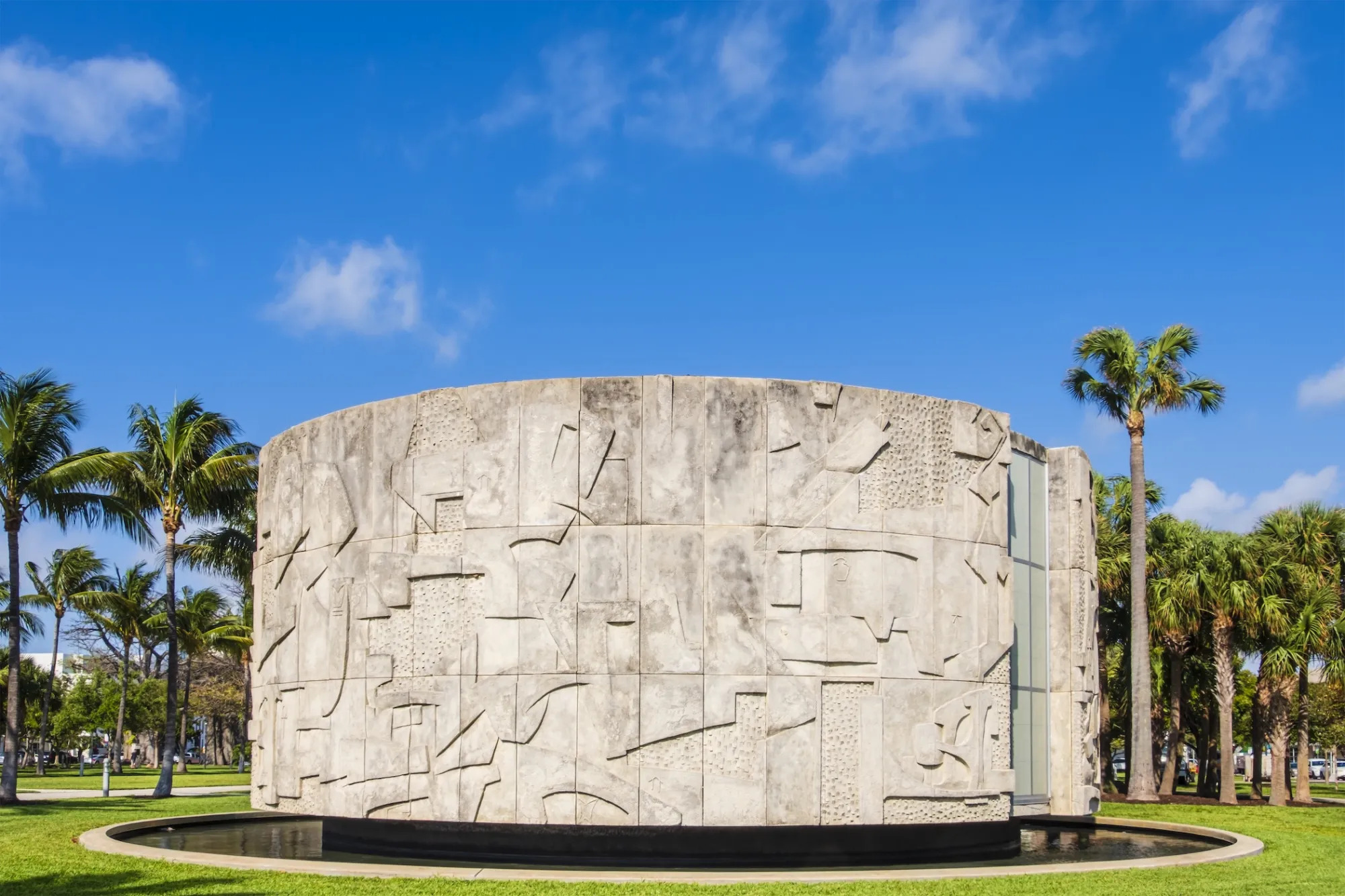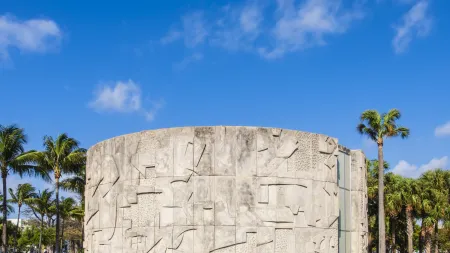
Earth keeps the score, to our awe and shame. Conjure the great grooves weathered into rock by flowing water or the broken forest beds, stripped for resources. Where we bury our memories, the land bares them—it has no other choice. Would you stomp across someone’s body? What about their soul?
Those questions are asked by one of the most visible installations currently on view in Miami: Topography of Memory, by the Brazilian artist Sallisa Rosa, which comprises 100 ceramic forms—sculpted from clay forged by friends and volunteers in Rio—that rise from the Collins Park Rotunda in Miami Beach. No two of its pieces are exactly alike, and the lot is easily mistaken for a hauntingly beautiful stalagmite grove. Celestial bodies descend from the ceiling, while soft mist drifts through the negative space, illuminated by an amber glow. Something precious and ancient brews.
Commissioned by Audemars Piguet Contemporary and guest-curated by Thiago de Paula Souza, Topography of Memory marks Rosa’s first solo exhibition in the United States and her largest ceramic project to date. Following its run in Miami, it will be presented next year at the Pinacoteca de São Paulo (March 16 to July 28), also marking the first time Audemars Piguet Contemporary’s first commission in Brazil.
From the communal forging, to the materials and their firing in a kiln built underground, each step of the process was part of long artistic tradition.
“In Topography of Memory, Rosa builds upon the notion of ‘memory programming’ introduced in her previous work,” de Paula Souza said. “Each of the sculptures is a unique expression of Rosa’s memories. The installation mirrors an underground environment, bathed in earth-toned lights, where visitors will encounter interactions between the stories engraved in the ceramic objects and the memories embedded in each grain of soil within the installation.”

It will be on view in tandem with Art Basel Miami Beach, which buzzes nearby as a sort of counter-experience. The intimate Topography of Memory rewards slow looking; the star-studded bazaar is a perpetual machine of motion and money. At any art fair—especially one of such magnitude—attention spans generally run shorter. Rosa’s work is serene and solemn, like a ritual site; it isn’t likely to be lost in the crowd.
In addition to her installation, she has new ceramics and watercolors in the Kabinett section of the fair, in a booth hosted by the Brazilian gallery A Gentil Carioca.
Born in Goiânia and based in Rio de Janeiro, Rosa makes sculptures, photographs, and videos informed, in part, by the experience of life as an Indigenous person in urban environments. Tethered to an ancestry that actively faces erasure, she seems to be thinking relentlessly on what was lost, what remains, and what could be, which is yet undetermined. A startling ascendant self-taught artist, she had her first solo exhibition at Museu de Arte Moderna in Rio de Janeiro in 2021 and has also participated in group shows at Théâtre de L’Usine, Geneva, the Royal Academy of Arts, London, and SNAP, Shanghai, and São Paulo’s Paço das Artes.
Her work has touched on surveillance, invisibility, conservatism, fascism, but is always underpinned by the fragility of culture. Land, language, artistic traditions—these are what sustains the self, what is worth bequeathing, and what is easily diluted.
“The earth is the place of memory,” Rosa said of the Miami piece. “While shaping the clay, I encoded memories into each piece, turning them into extracorporeal memories. People can move through the work, and my intention is that this movement will activate collective memory.”
Activists Call for Ceasefire in Gaza During Protest Outside Art Basel Miami Beach
One Year On From the NFT Crash, the Digital Art Scene at Miami Art Week Matures

Car of the Week: This 1957 Lincoln Restomod Is One of the Most Elegant Low-Riders We’ve Seen, and It’s up for Grabs

Kith to Open Women’s Store, Names Women’s Creative Director

Apple stores to start Vision Pro training soon, but that’s not great news to me

Why Vegas Was the Ideal Host for NBA In-Season Tournament Finals


